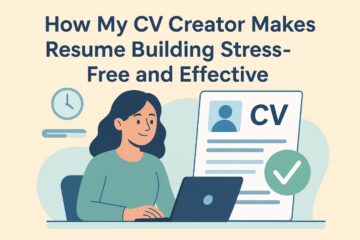Free games are easy to find. They’re on phones, consoles, and websites. But are they free? Not always. Some give you a free trial and say they’ll remind you before it ends. But many people forget, and then they get charged. So, in short, nothing is free. Before you get into the details, take a look at the Up-to-date sports stories at 22Bet to see how things work.
How Free Games Really Make Money
Many games say “free-to-play,” but there’s a business behind them. Developers and publishers need to earn money, too. So how do they do it?
In-App Purchases
This is the biggest way free games earn money. You download the game for free. Then, you’re offered things like:
- Extra lives
- Coins or gems
- New characters or skins
- Faster upgrades
These items cost real money. A few dollars here and there may not seem like much. But over time, they can add up fast.
Ads and Sponsorships
Some games show ads. You watch them to earn a reward. Or they appear between levels. This makes money for the company through ad views. Other games feature branded content or sponsored items. Big brands pay to be included.
Data Collection
Many games collect your data. What you click on. How long do you play? What items do you buy? This data can be sold or used to target you with ads—even outside the game.
What You Might Be Giving Up
Free games can cost more than money. Sometimes, you’re paying with your time, attention, or privacy.
Time and Focus
Many games are designed to keep you playing. Endless levels. Daily rewards. Time-limited events. They want you to come back every day. Why? The more time you spend, the more likely you are to spend money. You may not even notice how much time you’re losing. But it adds up.
Privacy and Data
When you agree to the terms of service, you may be giving the game access to:
- Your contacts
- Your location
- Your browsing habits
- Your device information
This info might be shared or sold. You’re not paying with money, but you are paying with your data.
The Psychology Behind Free Games
Ever wonder why free games feel so addictive? It’s not by accident. Developers use smart tricks to keep you hooked.
Reward Loops
Games give you small wins often. A badge. A new item. A new level. Your brain gets a dopamine hit. You feel good. You keep playing. This loop is called variable reward, used in casinos too.
FOMO (Fear of Missing Out)
Some items are only available for a short time. Or you can only get a big reward if you log in every day. This makes you feel like you have to keep playing. Otherwise, you miss out.
How to Avoid the Common Traps
The good news? You can enjoy free games and stay in control. Here’s how.
Set Limits
Decide how much time or money you’re willing to spend before you start.
Use these tips:
- Set a timer when you play
- Stick to a monthly game budget
- Avoid linking your credit card to the game
You’ll be less likely to spend by accident.
Check the Settings
Some games let you turn off certain data sharing. Look in the privacy or settings menu. Also, check if the game offers a “no-ads” version for a one-time payment. It might be worth it.
Read Before You Tap
Don’t skip the permissions screen. Know what the game is asking for. If it seems like too much, look for another game.
When Free Games Start to Feel Like Work
Some games ask you to log in every day. They give you tasks, goals, and pressure to keep up. Over time, this can start to feel like a job. You play because you have to—not because you want to. That’s when it’s time to take a break.
What Ads in Free Games Do
Free games often use ads to make money. Some are quick and easy. Others are long or pop up often. These ads are not just annoying—they track your behavior and show you things to make you spend money later. Be careful what you tap on.
Smart Ways to Enjoy Free Games
You don’t have to stop playing free games. Just be smart about it. Set time limits. Avoid spending real money unless it feels truly worth it. Look for games with good reviews and fair systems. Play for fun, not pressure.
What to Look For in Safer Free Games
Not all free games are shady. Some offer real value without tricks.
Signs of a Good Free Game
- You can enjoy it without spending
- Ads are short and skippable
- There’s no pressure to buy
- The game explains purchases clearly
- It respects your data and privacy
Games like these give players real choices. You decide how to play.
A Few Good Examples
While some games go overboard, others get it right. Look for these traits:
- No pay-to-win features
- Cosmetic-only purchases
- Optional ads for bonuses
- Clear data policies
Games to Be Careful With
Watch out for games that:
- Asking for too much info up front
- Constantly push you to buy items
- Make it hard to play without spending
- Lock key features behind payments
These can lead to frustration and wasted time or money.
Why Kids Are Most Affected by Free Games
Many free games are made to attract kids. Bright colors, cute characters, and simple rewards keep them playing. Kids may not understand how money works in games. They might tap “buy” without knowing it costs money. That’s why parents should see what their kids play and use safety settings.
How Free Games Can Impact Your Mood
Playing games is fun. But playing too much can make you feel bad. If a game makes you upset or pushes you to spend money, it’s not good for you. Games should make you happy, not stressed. Watch how you feel after playing.
The Difference Between Free and Freemium
Not all free games are the same. Some are truly free—you can play and enjoy everything without paying. Others are “freemium.” That means the game is free at first, but it locks better features behind payments. Always check what kind of game you’re downloading.
Tips for Parents to Keep Gaming Safe at Home
Parents can do small things to help keep kids safe. Use parental controls on phones or consoles. Turn off in-app purchases. Talk with kids about what’s safe to click on and what’s not. Play the game with them sometimes to understand how it works.



